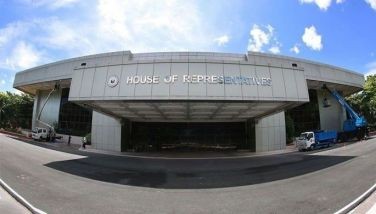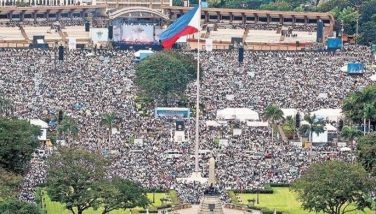Going after smugglers

Import smuggling is a pervasive problem in the Philippines. Its tentacles reach almost anything that can be brought into the country from abroad from petroleum to construction materials to cigarettes, and even agricultural commodities.
Usually, when imported products carry high tariffs, the temptation for importers to illicitly ship them in becomes greater. Coupled with a weak system of processing imports, the problem of wrongly declaring goods either in value, volume or kind results in an evasion of tax payment and, in many cases, dumping of “cheap” smuggled goods that undermine local producers.
The other side of the smuggling issue is local industries’ inability to compete with their import counterparts in the absence of protection accorded by tariffs and restrictions, especially when such imports are limited by a minimum access values.
Local industries and producers need protection when their inputs and/or outputs are assessed high duties and taxes. In the case of the farming sector, for example, the high cost of imported fertilizers, typically accounting for 20 to 30 percent of production inputs, makes it vulnerable to technical smuggling.
In 2016, the government attempted to address the issue of import smuggling through two laws. The Customs Modernization and Tariff Act (CMTA) was passed amending the Tariff and Customs Code of the Philippines to modernize customs rules and procedures, and the Anti-Agricultural Smuggling Act (AASA) was also signed into law declaring large-scale agricultural smuggling as economic sabotage.
Slow progress
Unfortunately, as with many laws in the Philippines, implementation takes time – often, too long.
It took the Bureau of Customs (BOC) five years from the passage of the CMTA to actually launch the Philippine Customs Modernization Project designed to improve its administrative capabilities by streamlining and automating its procedures and installing a world-class customs processing system. The project can only expected to be fully operational earliest by 2024.
Meanwhile, smuggling issues have become more prevalent. In the agriculture sector particularly, farmer groups have raised alarm over the increased entry of smuggled pork, chicken, onions, garlic, and other vegetables in 2020.
The Samahang Industriya ng Agrikultura (SINAG), citing United Nations data, has estimated foregone revenues from the smuggled foods and agricultural products at a minimum of P9 billion. Worse, SINAG declares, not a single smuggler has been put to jail.
Loopholes
Farmer groups have decried alleged flaws in the ASSA that has allowed scrupulous traders to boldly step up their smuggling of both vegetables and fruits. The Lower House, on the other hand, is looking at amending the CMTA with an end view of tightening anti-smuggling efforts.
Both laws, it seems, need to be given a more thorough review judging from the continued smuggling of goods affecting the agriculture sector. Even the creation of the Anti-Smuggling Task Force by the BOC in 2018 has done little to stem the smuggling tide.
Import smuggling so far has evaded most of the initiatives that have been introduced by government, although the Department of Finance (DOF) is relying on the P5 billion customs modernization project introduced last year and partially funded through an $88-million loan from the World Bank to do the job.
With majority of the loopholes that give rise to smuggling in the Philippines classified as technical weaknesses, where imported goods are not properly labeled or assessed with the correct duties, much of the blame for these smuggling problems can be heaped on the BOC.
Here’s hoping that the customs modernization project will bear fruit before the economic damage due to rampant smuggling becomes irreversible.
Boosting exports
A component of the customs modernization program that stands out is its promise towards improving business facilitation for Philippine exporters. Currently, the Philippines has one of the worst export procedures in the ASEAN region.
According to the World Bank, domestic companies in the Philippines export only 3.5 percent of their output, compared to 26 percent in Malaysia and Thailand. Foreign companies based in the Philippines export 25.5 percent of their output, compared to 78.7 percent in Vietnam, 84 percent in Malaysia, and 93 percent in Thailand.
A container van in the Philippines can take up to 120 hours to clear customs and go through associated inspection procedures, whereas it only takes 56 hours in Vietnam, 50 hours in Thailand, or 36 hours in Malaysia. This alone is a great disincentive for Philippine-based businesses to explore export opportunities.
With the project completion, the DOF is looking at more efficient port operations, a dramatic reduction in corruption in the BOC, subsequent increases in export trade volumes, and more importantly, an expansion in duty collections for the state coffers.
The experience of the World Bank in countries that implemented customs modernization was an improvement in duty and tax collections from 11 percent up to 300 percent.
For decades, the BOC has been regarded as the government’s premier seat of corruption, which has made it an underperformer in terms of collections for the state treasury while being regarded as the top agency when it comes to tax leakages.
In the latest report by the BOC on its modernization program, roughly 82 percent of its procedures are now automated, which has allowed it to exceed its collection targets even during the pandemic. The bureau had also completed its integration of the Manila International Container Port and the Ports of Manila, Cebu, and Davao with the Customs Operations Center in Manila.
Certainly, if the whole modernization program is completed and continues to deliver what has been promised, it can bury for good its notoriety.
Facebook and Twitter
We are actively using two social networking websites to reach out more often and even interact with and engage our readers, friends and colleagues in the various areas of interest that I tackle in my column. Please like us on www.facebook.com/ReyGamboa and follow us on www.twitter.com/ReyGamboa.
Should you wish to share any insights, write me at Link Edge, 25th Floor, 139 Corporate Center, Valero Street, Salcedo Village, 1227 Makati City. Or e-mail me at [email protected]. For a compilation of previous articles, visit www.BizlinksPhilippines.net.
- Latest
- Trending
































